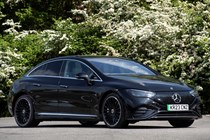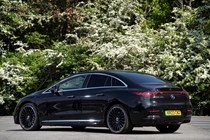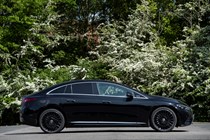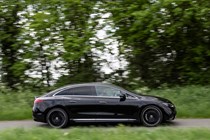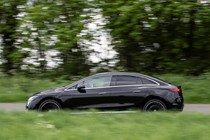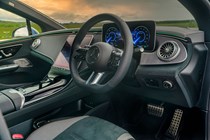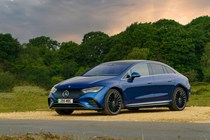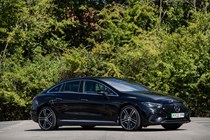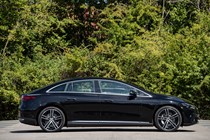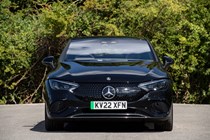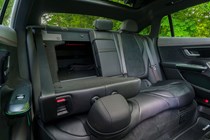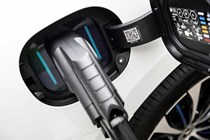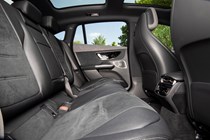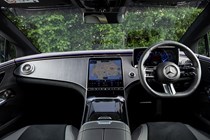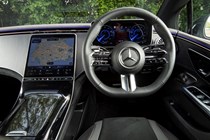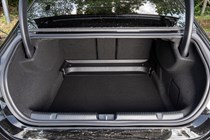
Mercedes-Benz EQE engines, drive and performance
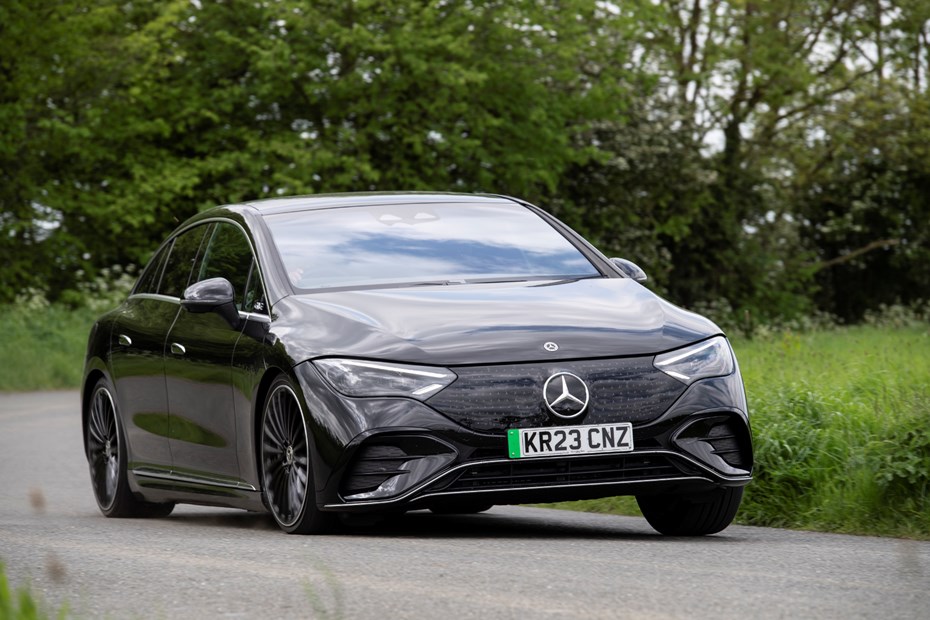
- Three options
- Fast enough for most folk
- Smooth fuss-free acceleration
What power options are there?
There are three to choose from. The least expensive and powerful is the 300. These models get 245hp and a 0-62mph time of around 7.3 seconds.
The second model is the 350. This ups power to 292hp and an official 0-62mph time of 6.4 seconds. At the top of the lineup is the AMG EQE 53, which gets its own review.
What’s it like to drive?
The EQE’s driving experience is a mixed bag. Sometimes it’s very good, although some way short of great, but in other senses it is slightly disappointing. The steering is easy and natural and the ride is comfortable. At lower speeds and over sharp bumps this is a good thing, but it can lead to the EQE feeling a little boat-like at higher speeds.

Switching between the different drive modes – Eco, Comfort, Sport, Individual – gives a more or less lively response to the accelerator but not to a degree that it drastically changes the car’s personality. Using the + and – paddles behind the steering wheel to adjust the level of energy recuperation when you lift off the accelerator brings a far bigger change to the driving experience. At one extreme, there’s no braking effect – you coast on seemingly unbothered by the laws of inertia. At the other extreme, it feels like you’re stabbing at the brakes almost as soon as you lift off. The middle setting works much better and we suspect that most people will default to that unless they are in the most stop-start of urban conditions.
There’s also a setting that adapts to the circumstances. If, for instance, you’ve approached a bend at an unwise speed, the car will apply a heavy dose of recuperative braking when you finally ease off the gas. Or on a series of downhill bends, it will subtly help out without being explicitly instructed to.
If you engage all the safety systems, and programme in a sat-nav destination, and activate cruise control, you can achieve a limited (and legal) level of self-driving, perhaps more accurately described as enhanced idiot-proofing: it will help you stay in lane, it will help you slow for bends, it will advise you when to stop accelerating, and it will suggest route alterations to get you to a charger.
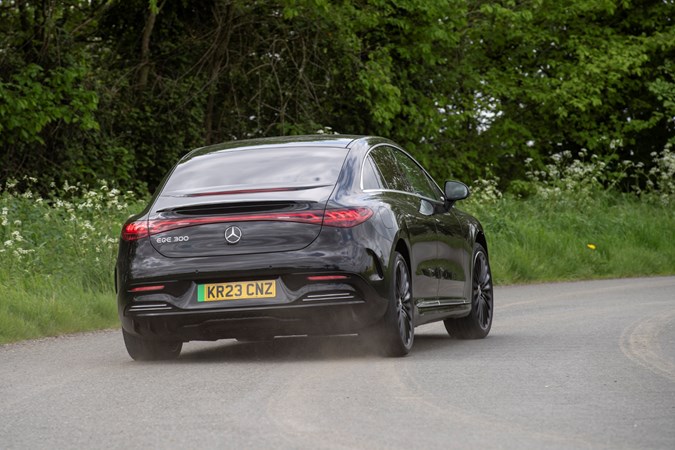
The main fly in the ointment is the brake action – the actual brakes, not the recuperative system. You have to press the pedal for what feels like a very long way before you get much in the way of actual braking, meaning you have to prod it harder than you might imagine if you approach a junction carrying a little more speed than you intended.
The rear window is quite small, restricting your view out of the back. And the camera/sensor cluster built into the windscreen behind the rear-view mirror is massive, restricting your view of some traffic lights.
Rear-wheel steering is available, with the back wheels able to turn through 4.5º, reducing the turning circle from 12.5 metres to 11.6, or an upgraded version (one of several features that can be retro-fitted via over-the-air updates) gives 10º of movement and tightens the circle to 10.7 metres.


